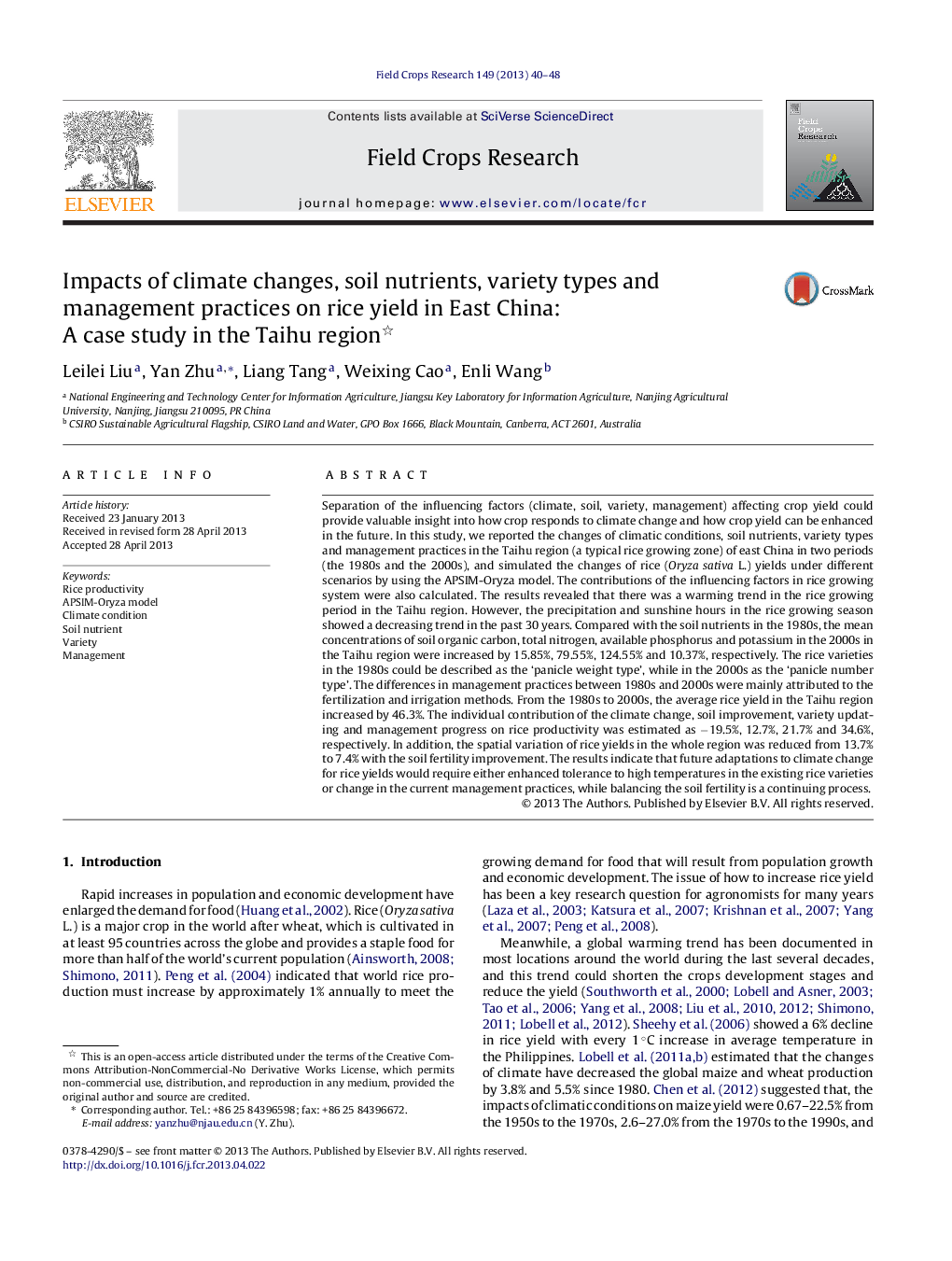| Article ID | Journal | Published Year | Pages | File Type |
|---|---|---|---|---|
| 6375232 | Field Crops Research | 2013 | 9 Pages |
Abstract
Separation of the influencing factors (climate, soil, variety, management) affecting crop yield could provide valuable insight into how crop responds to climate change and how crop yield can be enhanced in the future. In this study, we reported the changes of climatic conditions, soil nutrients, variety types and management practices in the Taihu region (a typical rice growing zone) of east China in two periods (the 1980s and the 2000s), and simulated the changes of rice (Oryza sativa L.) yields under different scenarios by using the APSIM-Oryza model. The contributions of the influencing factors in rice growing system were also calculated. The results revealed that there was a warming trend in the rice growing period in the Taihu region. However, the precipitation and sunshine hours in the rice growing season showed a decreasing trend in the past 30 years. Compared with the soil nutrients in the 1980s, the mean concentrations of soil organic carbon, total nitrogen, available phosphorus and potassium in the 2000s in the Taihu region were increased by 15.85%, 79.55%, 124.55% and 10.37%, respectively. The rice varieties in the 1980s could be described as the 'panicle weight type', while in the 2000s as the 'panicle number type'. The differences in management practices between 1980s and 2000s were mainly attributed to the fertilization and irrigation methods. From the 1980s to 2000s, the average rice yield in the Taihu region increased by 46.3%. The individual contribution of the climate change, soil improvement, variety updating and management progress on rice productivity was estimated as â19.5%, 12.7%, 21.7% and 34.6%, respectively. In addition, the spatial variation of rice yields in the whole region was reduced from 13.7% to 7.4% with the soil fertility improvement. The results indicate that future adaptations to climate change for rice yields would require either enhanced tolerance to high temperatures in the existing rice varieties or change in the current management practices, while balancing the soil fertility is a continuing process.
Related Topics
Life Sciences
Agricultural and Biological Sciences
Agronomy and Crop Science
Authors
Leilei Liu, Yan Zhu, Liang Tang, Weixing Cao, Enli Wang,
